Learn how to selectively recolor a portion of an image using the Hue/Saturation adjustment layer and to do so without having to make a complex timeconsuming selection to do so.
See all our video tutorials on our YouTube channel
Learn how to selectively recolor a portion of an image using the Hue/Saturation adjustment layer and to do so without having to make a complex timeconsuming selection to do so.
See all our video tutorials on our YouTube channel
Labels: Helen Bradley, how to, layer adjustment, Photoshop, video tutorials, YouTube
How to convincingly replace a poor sky in Photoshop. You’ll need your photo and nothing else – we make the blue sky in the tutorial.
See all our video tutorials on our YouTube channel.
Labels: cs5, fix a sky, Helen Bradley, how to, Photoshop, replace, technique, video, video tutorial, YouTube
Categories:video
Learn how to add impact to your animal and bird images with this smart and easy Lightroom fix.
Come and see all our video tutorials on our YouTube channel.
Labels: fixing photo, Helen Bradley, how to, Lightroom, Tutorial, video tutorial, YouTube
Categories:photoshop
Labels: Helen Bradley, how to, PowerPoint, powerpoint presentation, pptplex cool, video tutorials
Categories:office

It is easy to save an image copied from the web to a Photoshop file. To do this, first copy the image to the Windows clipboard then choose File > New and press Ok.
The Photoshop file will be sized automatically to exactly the same image size as the image on the clipboard.
Now choose Edit > Paste to paste the image into position and you are ready to save it.
Labels: Clipboard, copy image, file size, helan bradley, how to, image, paste image, Photoshop, tip
Categories:photoshop
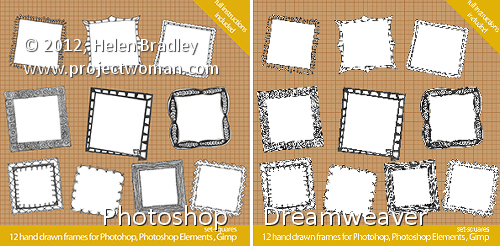
In the images above, you can see that the image on the right looks appalling in comparison with that on the left.
The two images are the same size but the one on the left was scaled down from a large size in Photoshop and the one on the right was scaled down by downsizing it in Dreamweaver.
The results are a great example of why you should never downsize an image in a web editor instead of a graphics program! The resized version on the right is downright nasty in comparison to the one on the left.
If you need to scale down your images – these were reduced from 2,376 x 2,376 pixels in size to 300 x 300 – then it’s vital that you use a proper tool to do so.
Photoshop has an image resize tool which you can get to by choosing Image > Image Size. Type the width and height of the finished image and then from the Resample image dropdown list select Bicubic Sharper (Best for Reduction). If you compare the results with different settings, you’ll see that the Bicubic Sharper typically gives the best result for downsizing images.
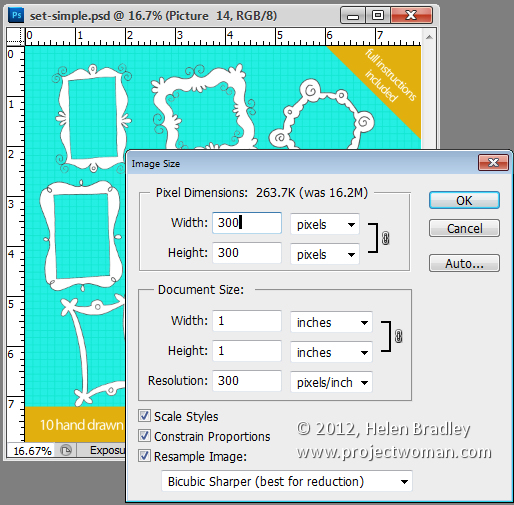
When you use this option the resulting images look as good downsized as they do on the screen in front of you.
Downsize them, save them and then import them into Dreamweaver and use them at that size. You will love your images a lot better when you do this.
Labels: downsizing images, Dreamweaver, Helen Bradley, how to, photo editing, Photoshop, photoshop vs dreamweaver, resizing images, tip
Categories:photoshop
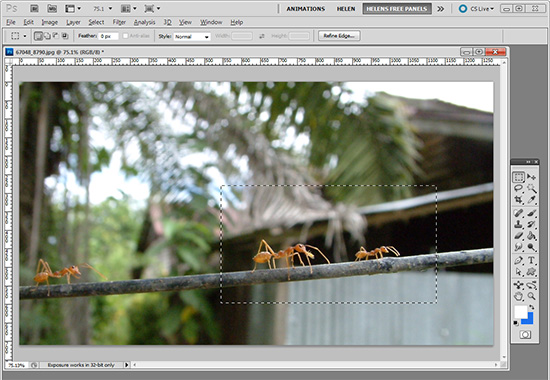 (photo by: Miwa via www.sxc.hu)
(photo by: Miwa via www.sxc.hu)
When those marching ants are too distracting on a selection you can make them disappear by pressing Ctr + H on a PC or Command + H on a Mac. Don’t forget to reverse it when you’re done by using the same commands.
Labels: how to, marching ants, Photoshop, quick tip, tip, trevor adobe, trevor payne
Categories:photoshop, trevor tip
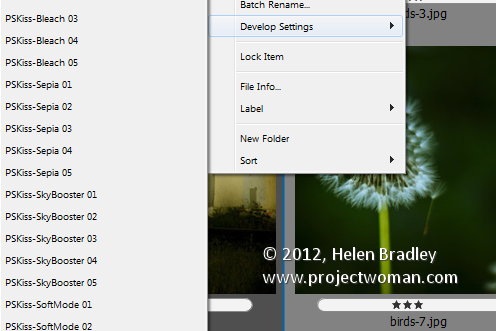
If you have a preset, for example a preset that applies an auto tone correction to an image in Adobe Camera Raw then you can apply this to an image in Bridge without needing to open Camera Raw.
Right click the image in Bridge, choose Develop Settings and then select the preset from the list.
Any preset can be applied automatically simply by selecting it. If you need to undo it, choose Develop Settings > Clear Settings. This will remove the settings from the image.
This strips out any ACR changes that you’ve made to the image.
A bonus of this feature is that the fix can be applied to jpg as well as raw images direct from Bridge.
Labels: ACR, adobe raw, bridge, develop settings, Helen Bradley, how to, images, jpg, tip
Categories:photoshop
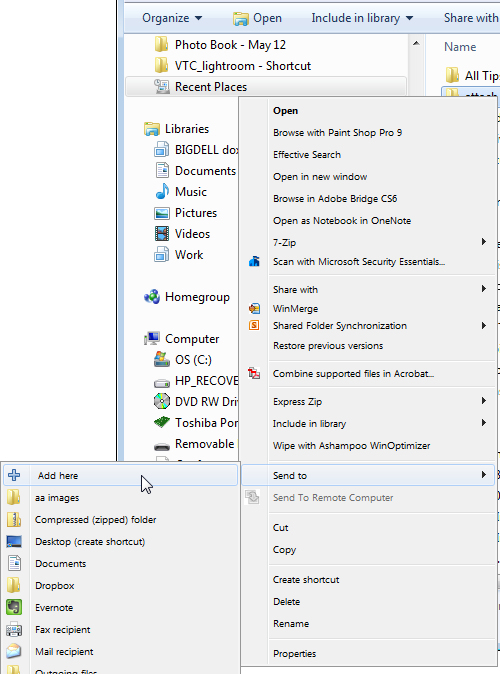
If you’re like me, you use the Send To feature of Windows Explorer quite frequently. Simply right click on a file in Windows Explorer and you have a Send To option. Click this and you’re able to send files to a list of sources.
While some of these options are built-in such as Compressed (Zip Folder), Desktop, and Mail Recipient, there are times when you’d like to add your own preferred location to this list.
For me, I like to assemble my files for emailing into a folder called Outgoing Files. I need that in my Send To list so that it’s accessible any time I need to send a file to it rather than having to copy and paste the file from one folder to another.
The problem with Send To is that it’s easy to use but difficult to add items to the Send To list itself.
Of course, you could go and find the folder and dump things in it but wouldn’t it be a whole lot easier if adding files to the Send To list were as easy as sending files to somewhere using it? I think it would be!
Enter a small free and opensource application called SendToSendTo. You can find it here: sendtosendto download
Download and install the application then restart your computer.
When you do this, locate a folder or file, right click and choose Send To. You’ll find that now you have an entry at the very top of the list called Add Here. Right click it and choose Send To > Add Here and you can then add that folder to the send to list by simply clicking Create.
What SendToSendTo does is to automatically add the folder that you point to into the Send To list.
One of the things that you’ll love about SendToSendTo is that it’s simple to install and use and it makes something that should have been easy to use all along work the way it should not as Microsoft designed it – enough said!
Labels: add locations, computer, download, Helen Bradley, how to, sendto sento, tip
Categories:office
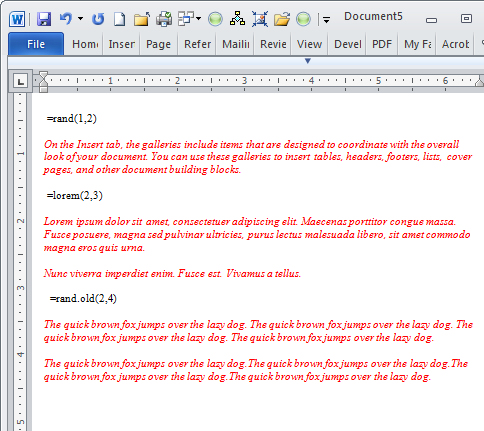
You may already know that typing =rand(1,2) on a new line in Word types one paragraph of two sentences in Word. The text is this random Word help style text:
“On the Insert tab, the galleries include items that are designed to coordinate with the overall look of your document. You can use these galleries to insert tables, headers, footers, lists, cover pages, and other document building blocks.”
But did you know there are other types of text you can type? Try =lorem(2,3) and press enter to get two paragraphs of three sentences each of the Lorem ipsum dummy text.
“Lorem ipsum dolor sit amet, consectetuer adipiscing elit. Maecenas porttitor congue massa. Fusce posuere, magna sed pulvinar ultricies, purus lectus malesuada libero, sit amet commodo magna eros quis urna.
Nunc viverra imperdiet enim. Fusce est. Vivamus a tellus.”
If you type =rand.old(2,4) and press enter you get the older Word dummy text – the Quick Brown fox..
The quick brown fox jumps over the lazy dog. The quick brown fox jumps over the lazy dog. The quick brown fox jumps over the lazy dog. The quick brown fox jumps over the lazy dog.
The quick brown fox jumps over the lazy dog. The quick brown fox jumps over the lazy dog. The quick brown fox jumps over the lazy dog. The quick brown fox jumps over the lazy dog.
So now you have plenty of random text options – of them all the Lorem one is the most handy for when you really need large portions of dummy text in a document.
Labels: filler, Helen Bradley, how to, Microsoft Office, Microsoft Word 2010, Random text, tip
Categories:Uncategorized